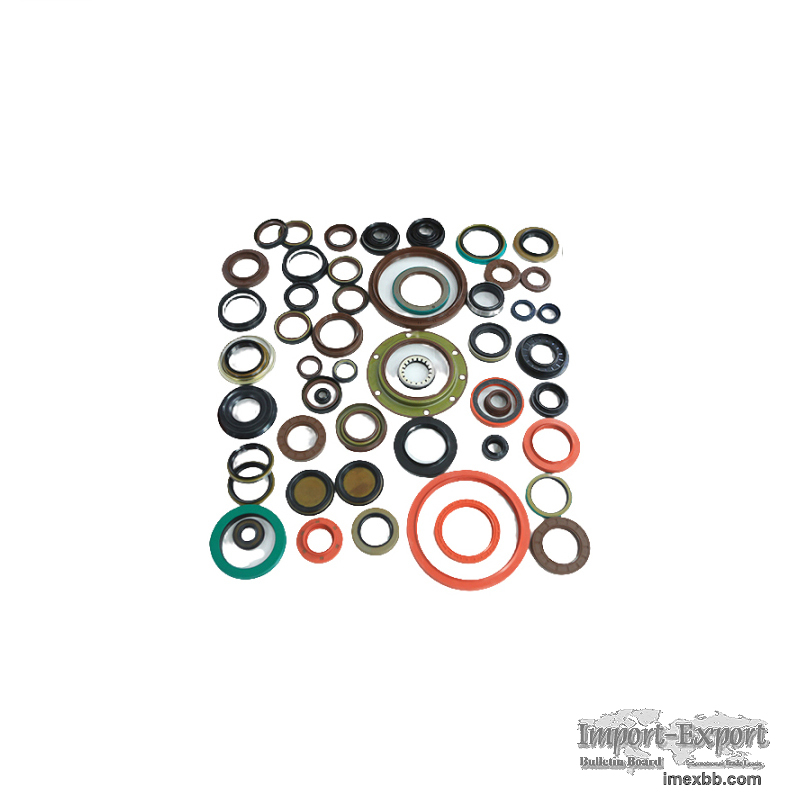 |
 |
Home > Offers to Sell > Others & Excess Inventory > Others
| Contact: | junyingliu |
|---|---|
| Company: | Xingtai Shanfeng special rubber products Co., Ltd |
| Hetou Industrial Zone, Renze District, Xingtai City, Hebei Province | |
| Xingtai City, Hebei | |
| China | |
| Phone: | 18713908608 |
| E-Mail: | |
| Date/Time: | 7/1/24 9:12 GMT |
Customized Oil Seal OEM Different Materials Rotary Shaft Oil Seals
In the world of mechanical engineering, oil seals are critical components
that ensure the smooth operation of machinery by preventing leaks and
contamination. Choosing the best material for custom oil seals is a complex
task that involves understanding the specific needs of the application. This
article delves into various materials used for oil seals, highlighting their
strengths and ideal applications to help you make the best choice.
Key Considerations for Material Selection
1. Environmental Factors:
Temperature Extremes: The operating temperature is a primary factor.
Materials like FKM are excellent for high-temperature applications, while NBR
works well in moderate temperature ranges.
Pressure Variations: Materials must withstand the pressure conditions of
the application. High-pressure scenarios might require robust materials like
PTFE or HNBR.
2. Chemical Exposure:
Fluid Compatibility: The seal material must be compatible with the
lubricants and fluids it will encounter. NBR is suitable for petroleum-based
oils, while EPDM is better for water-based applications.
Chemical Resistance: In environments exposed to harsh chemicals, materials
like PTFE or FKM offer superior resistance.
3. Mechanical Requirements:
Durability: The material's ability to resist wear and tear is crucial. HNBR
and polyurethane are known for their high durability.
Flexibility: Flexibility ensures that the seal maintains contact with the
sealing surfaces. Silicone rubber offers excellent flexibility across a wide
temperature range.
Popular Materials for Custom Oil Seals
1. Nitrile Rubber (NBR):
Properties: Known for its good oil resistance, affordability, and
versatility. NBR performs well in a temperature range of -40°C to 120°C.
Applications: Widely used in automotive, industrial machinery, and
hydraulic systems.
2. Fluorocarbon Rubber (FKM):
Properties: Offers exceptional high-temperature resistance and chemical
compatibility. FKM can handle temperatures up to 250°C.
Applications: Ideal for aerospace, automotive, and chemical industries.
3. Silicone Rubber:
Properties: Maintains flexibility and performance across a broad
temperature range, with excellent resistance to ozone and oxidation.
Applications: Common in food processing, medical devices, and high-
temperature automotive parts.
4. Polytetrafluoroethylene (PTFE):
Properties: PTFE is unmatched in chemical resistance, high-temperature
tolerance, and low friction properties.
Applications: Used in chemical processing, high-temperature machinery, and
pharmaceutical equipment.
5. Hydrogenated Nitrile Rubber (HNBR):
Properties: HNBR offers enhanced heat, oil, and abrasion resistance
compared to standard NBR, making it suitable for demanding applications.
Applications: Often used in automotive components, oil and gas industry,
and high-performance machinery.
Steps to Select the Best Material
1. Evaluate Operating Conditions:
Assess the environmental factors such as temperature, pressure, and
exposure to chemicals. This evaluation helps narrow down the suitable
materials.
2. Balance Cost and Performance:
While materials like FKM and PTFE offer superior performance, they are more
expensive. Consider the balance between material cost and the performance
benefits.
Choosing the best material for custom oil seals requires a comprehensive
understanding of the operational environment, mechanical requirements, and
chemical compatibility. Each material, from NBR and FKM to PTFE and HNBR,
offers unique advantages that make them suitable for specific applications.
Minimum Order: 500 pieces
SOURCE: Import-Export Bulletin Board (https://www.imexbb.com/)
Similar Products:Not exactly what you are looking for? Post an Offer to Buy!
![]()
© 1996-2010 IMEXBB.com. All rights reserved.
|
|
|






